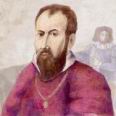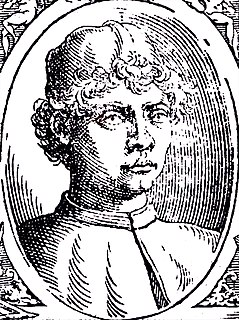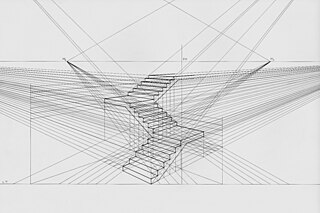
Filippino Lippi was an Italian painter working in Florence, Italy during the later years of the Early Renaissance and first few years of the High Renaissance.
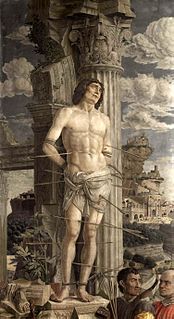
Andrea Mantegna was an Italian painter, a student of Roman archeology, and son-in-law of Jacopo Bellini. Like other artists of the time, Mantegna experimented with perspective, e.g. by lowering the horizon in order to create a sense of greater monumentality. His flinty, metallic landscapes and somewhat stony figures give evidence of a fundamentally sculptural approach to painting. He also led a workshop that was the leading producer of prints in Venice before 1500.

Lorenzo Lotto was an Italian painter, draughtsman and illustrator, traditionally placed in the Venetian school, though much of his career was spent in other North Italian cities. He painted mainly altarpieces, religious subjects and portraits. He was active during the High Renaissance and the first half of the Mannerist period, but his work maintained a generally similar High Renaissance style throughout his career, although his nervous and eccentric posings and distortions represented a transitional stage to the Florentine and Roman Mannerists.

Vittore Carpaccio was an Italian painter of the Venetian school, who studied under Gentile Bellini. He is best known for a cycle of nine paintings, The Legend of Saint Ursula. His style was somewhat conservative, showing little influence from the Humanist trends that transformed Italian Renaissance painting during his lifetime. He was influenced by the style of Antonello da Messina and Early Netherlandish art. For this reason, and also because so much of his best work remains in Venice, his art has been rather neglected by comparison with other Venetian contemporaries, such as Giovanni Bellini or Giorgione.

Bartolomeo Montagna was an Italian Renaissance painter who mainly worked in Vicenza. He also produced works in Venice, Verona, and Padua. He is most famous for his many Madonnas and his works are known for their soft figures and depiction of eccentric marble architecture. He is considered to be heavily influenced by Giovanni Bellini, in whose workshop he might have worked around 1470. Benedetto Montagna, a productive engraver, was his son and pupil and active until about 1540. He was mentioned in Vasari's Lives as a student of Andrea Mantegna but this is widely contested by art historians.

Pintoricchio or Pinturicchio whose formal name was Bernardino di Betto, also known as Benetto di Biagio or Sordicchio, was an Italian painter of the Renaissance. Born in Perugia in 1454 and dying in Siena in 1513, Pintoricchio acquired his nickname, meaning, because of his small stature. He also used it to sign some of his 15th and 16th century artworks.

Pietro Perugino, born Pietro Vannucci, was an Italian Renaissance painter of the Umbrian school, who developed some of the qualities that found classic expression in the High Renaissance. Raphael was his most famous pupil.
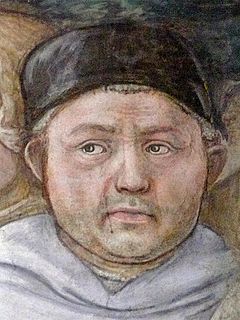
Fra' Filippo Lippi, O.Carm., also called Lippo Lippi, was an Italian painter of the Quattrocento.

Carlo Crivelli was an Italian Renaissance painter of conservative Late Gothic decorative sensibility, who spent his early years in the Veneto, where he absorbed influences from the Vivarini, Squarcione and Mantegna. He left the Veneto by 1458 and spent most of the remainder of his career in the March of Ancona, where he developed a distinctive personal style that contrasts with that of his Venetian contemporary Giovanni Bellini.

Lorenzo di Credi was an Italian Renaissance painter and sculptor, known for his paintings on religious subjects. He first influenced Leonardo da Vinci and then was greatly influenced by him.

Benvenuto Tisi was a Late-Renaissance-Mannerist Italian painter of the School of Ferrara. Garofalo's career began attached to the court of the Duke d'Este. His early works have been described as "idyllic", but they often conform to the elaborate conceits favored by the artistically refined Ferrarese court. His nickname, Garofalo, may derive from his habit of signing some works with a picture of a carnation.
Andrea Solari (1460–1524) was an Italian Renaissance painter of the Milanese school. He was initially named Andre del Gobbo, but more confusingly as Andrea del Bartolo a name shared with two other Italian painters, the 14th Century Siennese Andrea di Bartolo, and the 15th Century Florentine Andrea di Bartolo.
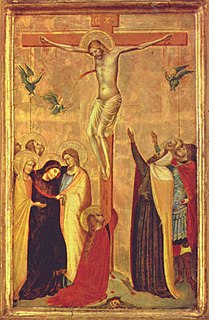
Bernardo Daddi was an early Italian Renaissance painter and the leading painter of Florence of his generation. He was one of the artists who contributed to the revolutionary art of the Renaissance, which broke away from the conventions of the preceding generation of Gothic artists, by creating compositions which aimed to achieve a more realistic representation of reality. He was particularly successful with his small-scale works and contributed to the development of the portable altarpiece, a format that subsequently gained great popularity.

The Maestà, or Maestà of Duccio is an altarpiece composed of many individual paintings commissioned by the city of Siena in 1308 from the artist Duccio di Buoninsegna. The front panels make up a large enthroned Madonna and Child with saints and angels, and a predella of the Childhood of Christ with prophets. The reverse has the rest of a combined cycle of the Life of the Virgin and the Life of Christ in a total of forty-three small scenes; several panels are now dispersed or lost. The base of the panel has an inscription that reads : "Holy Mother of God, be thou the cause of peace for Siena and life to Duccio because he painted thee thus." Though it took a generation for its effect truly to be felt, Duccio's Maestà set Italian painting on a course leading away from the hieratic representations of Byzantine art towards more direct presentations of reality.
The decade of the 1430s in art involved some significant events.
Pietro Paolo Agabito or Agabiti (c1470-c1540) was an Italian painter, sculptor, and architect from the Marche region.

The Master of Frankfurt was a Flemish Renaissance painter active in Antwerp between about 1480 and 1520. Although he probably never visited Frankfurt am Main, his name derives from two paintings commissioned from patrons in that city, the Holy Kinship in the Frankfurt Historical Museum and a Crucifixion in the Städel museum.



